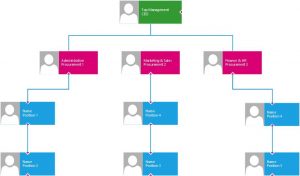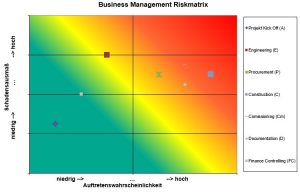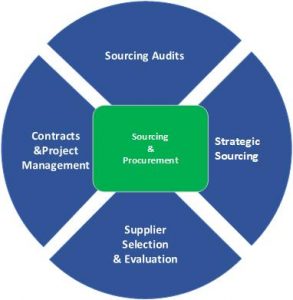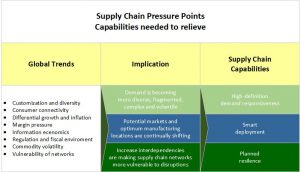
Business Organisation
Business Organization
Align your strategy, transform your business
When an organization doesn’t meet its stakeholders’ needs and expectations, the cause may not be a misguided strategy or vision. Often, underperformance is a result of a misaligned strategy across a company’s many complexes, interacting organizational parts.
We leverage a strategy-backed operating model and organization design approach. We identify an organization’s strategic goals, assess the fit of the organization against those goals, and then identify and implement the change needed to create a fit-for-purpose business. Finally, we look to enable the change by harnessing tried and true cultural and teaming levers.
Management Consultancy
Ask not what your businesses can do for you, but what you can do for them. By focusing on corporate canter profitability, we help clients invest in effective internal governance and enterprise-wide differentiating capabilities, then fill in portfolios with businesses that gain the most from their unique mix of governance skills and enterprise capabilities. Our services include:
- Annual planning processes
- Corporate center profitability
- Enterprise strategies

Risk Matrix
Risk Management
Put up a protective shield. AMEC experts helps you to take the right measures for controlling risks. Safeguard the future of your business.
Businesses need to take risks to survive in the market over the long term. Risks therefore represent danger, yet at the same time they are prerequisite for a business to succeed. AMEC experts guides you systematically through each of the steps in the risk management process as you identify, assess, analyse, communicate, control, monitor and document the risks affecting your business. Our solution assists you in complying with the statutory requirements regarding risk management. You also help to increase the level of risk awareness throughout the company.
Stakeholder Management
AMEC experts provide effective and proactive stakeholder consultation and management – we identify who the relevant stakeholders are and ensure that the issues that concern them are understood, considered and resolved in a transparent and auditable manner.
Communication is the key. We ensure that technical issues and that stakeholders are engaged with the process – it is critical that all parties are provided with a clear understanding of the issues to resolve them.
Our approach is to ensure that engagement is started early and importantly continues throughout the process so that everyone with an interest, from the public to the statutory authorities, have a chance to air their concerns, are aware of the issues and that views are properly considered before decisions are made.
Execution Planning
An organization’s strategy needs to be translated into concrete tasks and initiatives to deliver its strategic objectives. Business Execution Plans ask another set of questions that promote action and effective implementation of the strategy:
- What are the targets for each objective?
- Who holds the primary accountability for achieving the target?
- Who will do what by when to achieve the targets?
The execution plan specifies the organization’s strategic objectives, management and organizational accountabilities, performance metrics, prioritized projects & initiatives, and critical business processes to deliver the objectives. The execution plan also requires a monthly management scorecard to track progress and reinforce alignment on the execution of the strategy. This scorecard provides the focus for a monthly business performance meeting where management evaluates its progress on targets, initiatives, and key performance metrics.
AMEC’s management scorecard, which is a derivative of Kaplan & Norton’s Balanced Scorecard™, describes an organization’s strategic objectives, measures, and targets from four perspectives:
- Financial – the perspective of its owners
- Customer – the perspective of its customers
- Internal Process – the perspective of its managers and internal process owners
- Employee – the perspective of employees.
Each performance target must be assigned an owner who is accountable for the results the company attains.
In some cases, special initiatives must be undertaken in order to achieve strategic objectives. In these instances, AMEC experts applies its project management expertise through individual and team project coaching so that the initiative achieves the target outcomes.
All strategic objectives and key performance metrics are sorted by perspective (financial, customer, etc.) and then mapped to the responsible managers. The result is a one-page accountability matrix that clarifies roles and responsibilities and provides the basis for each manager’s performance contract and subsequent performance review.
For clients that have both a strategy and business execution plan, we move to sales execution. But wait!
Before sales execution, AMEC recommends a rigorous assessment of a company’s organization effectiveness, which shines a light on organizational “friction points.” These points of friction are the disablers, decision traps, impediments, and organizational barriers that will frustrate business plan and sales execution. Some clients refer to it as a “stress test.”

Procurement Service
Procurement Services
Procurement in most businesses is by far the largest Supply Chain cost. Particularly in the current economic environment, effective and efficient procurement across your business is vital.
This is equally applicable to direct procurement (products and materials) as well as indirect procurement (facilities and services).
AMEC’ procurement consultants provide a wide range of Strategic Sourcing and Procurement consulting services, as illustrated below:
Source Audits
- Assessment of current procurement spend
- Procurement risk assessment
- Assessment of the supply market
- Procurement structure, process and technology evaluation
- Procurement performance measurement
Contracts & Project Management
- Implementation management
- Procurement change management
- Monitoring procurement benefits
Strategic Sourcing
- Total procurement cost, not just purchase price
- Consolidating purchasing power
- Tighter supplier relationships
- Improved teamwork and purchasing skills
- Realigned procurement business processes, work and information flow
Supplier Selection & Evaluation
- Determining supplier qualifications
- Designing, communicating and analysing Request for Proposal & Questions
- Facilitating supplier negotiations
- Selecting and confirmation of suppliers

SCM
Supply Chain Management
Once upon a time, operating a supply chain at peak efficiency was a key to success. Today the business climate, customer expectations have grown more complex, which is fragmenting supply chains and shortening cycle times. As a result, supply chain efficiency alone is not sufficient; supply chains must become more agile in order to successfully respond to global trends and business pressures.
Demand itself is becoming more diverse, fragmented, complex, and volatile, and it’s happening just as companies are facing new economic, technical, and regulatory pressures. Potential business markets and optimum manufacturing locations are continually shifting. And thanks to increased interdependencies at every level, supply chain networks today are more vulnerable to costly disruptions.
Given the greater role that supply chains will play in determining a company’s success, it’s critical that these functions become more adaptive. Supply chain strategies need to more closely mirror or support the overall business strategy. In addition, the supply chain ecosystem and its management must be well defined, including how other functions interact with the supply chain.
Ultimately, the most effective and adaptive supply chains will possess high-definition demand responsiveness, smart deployment, and planned resilience.

